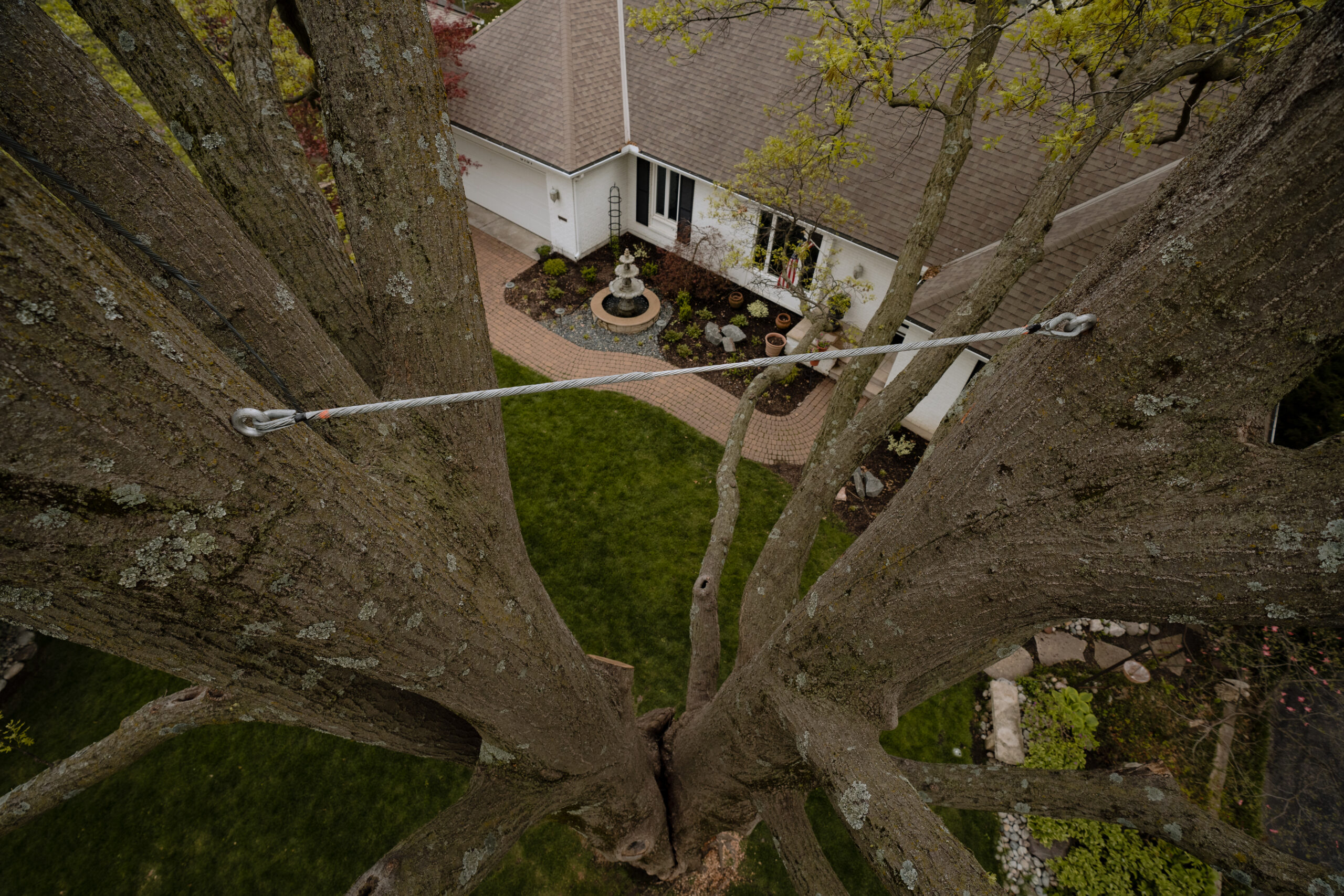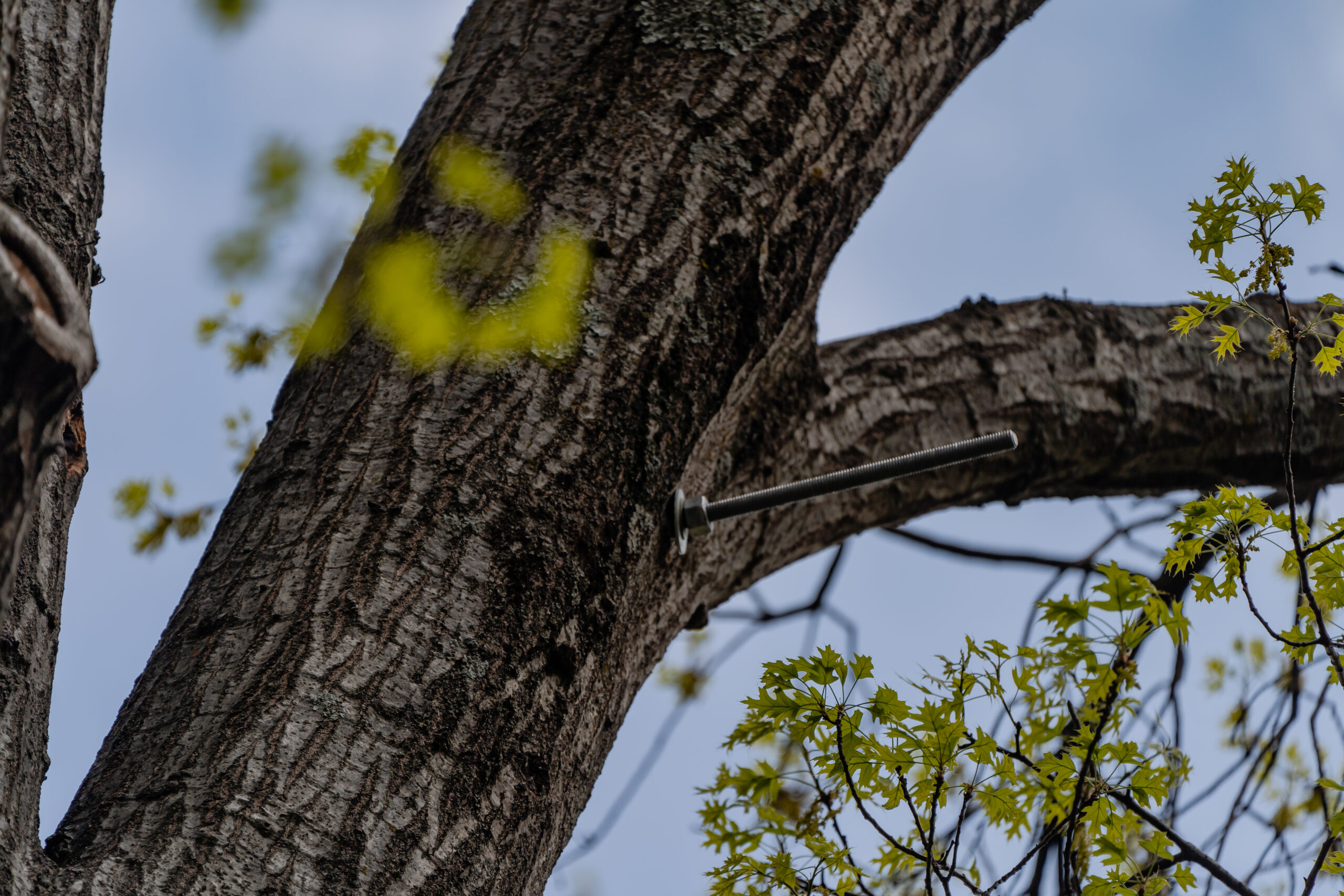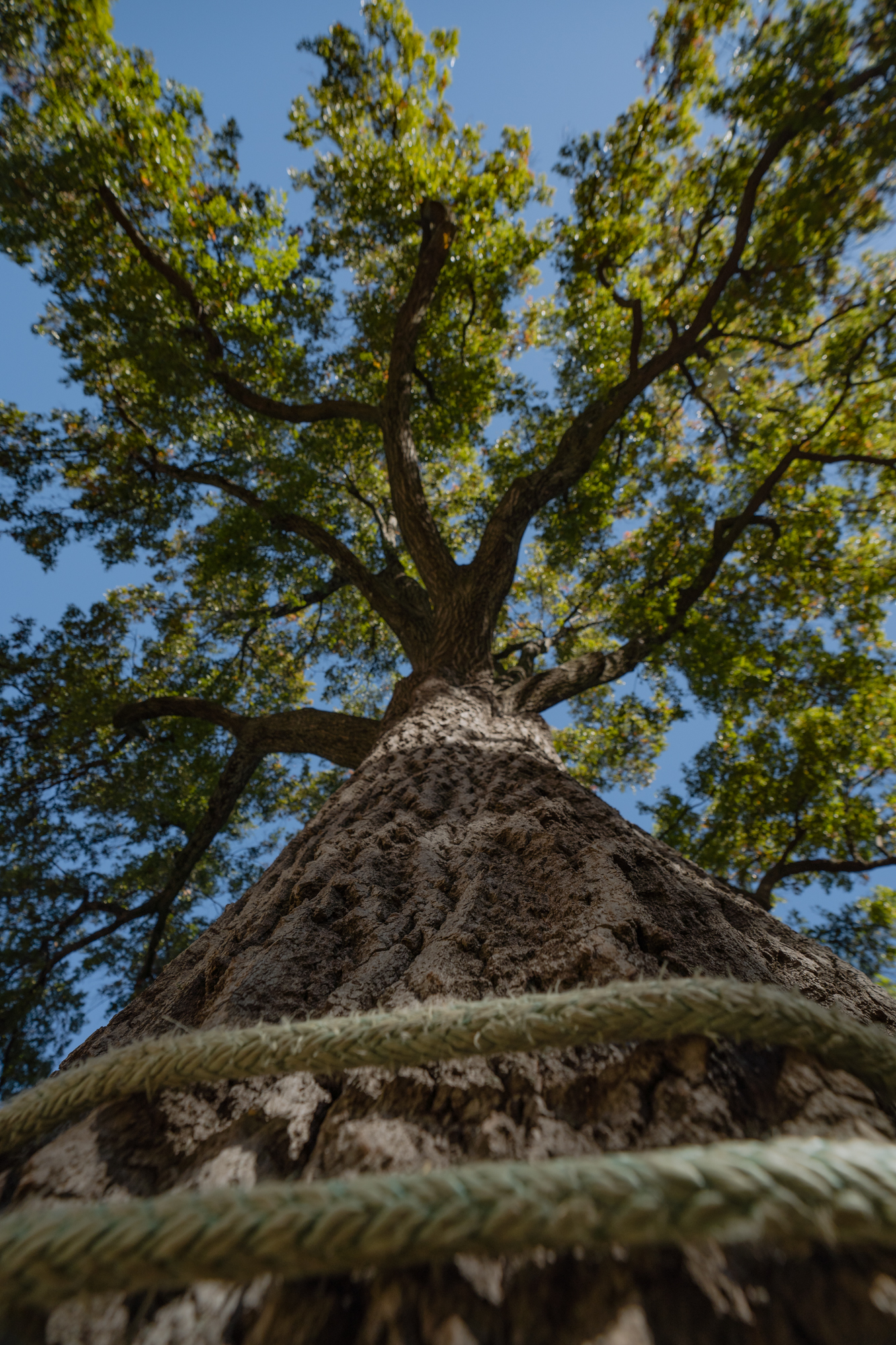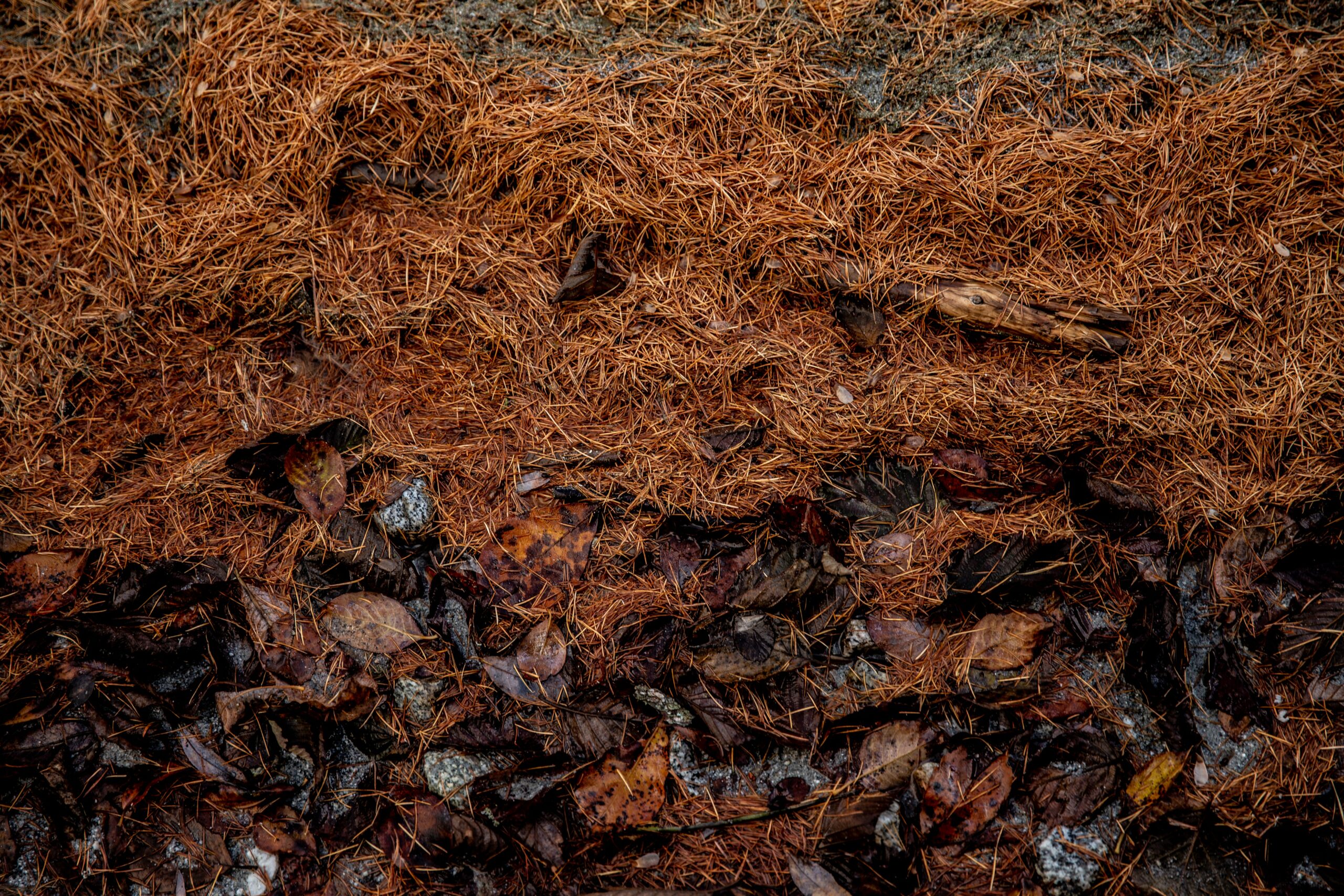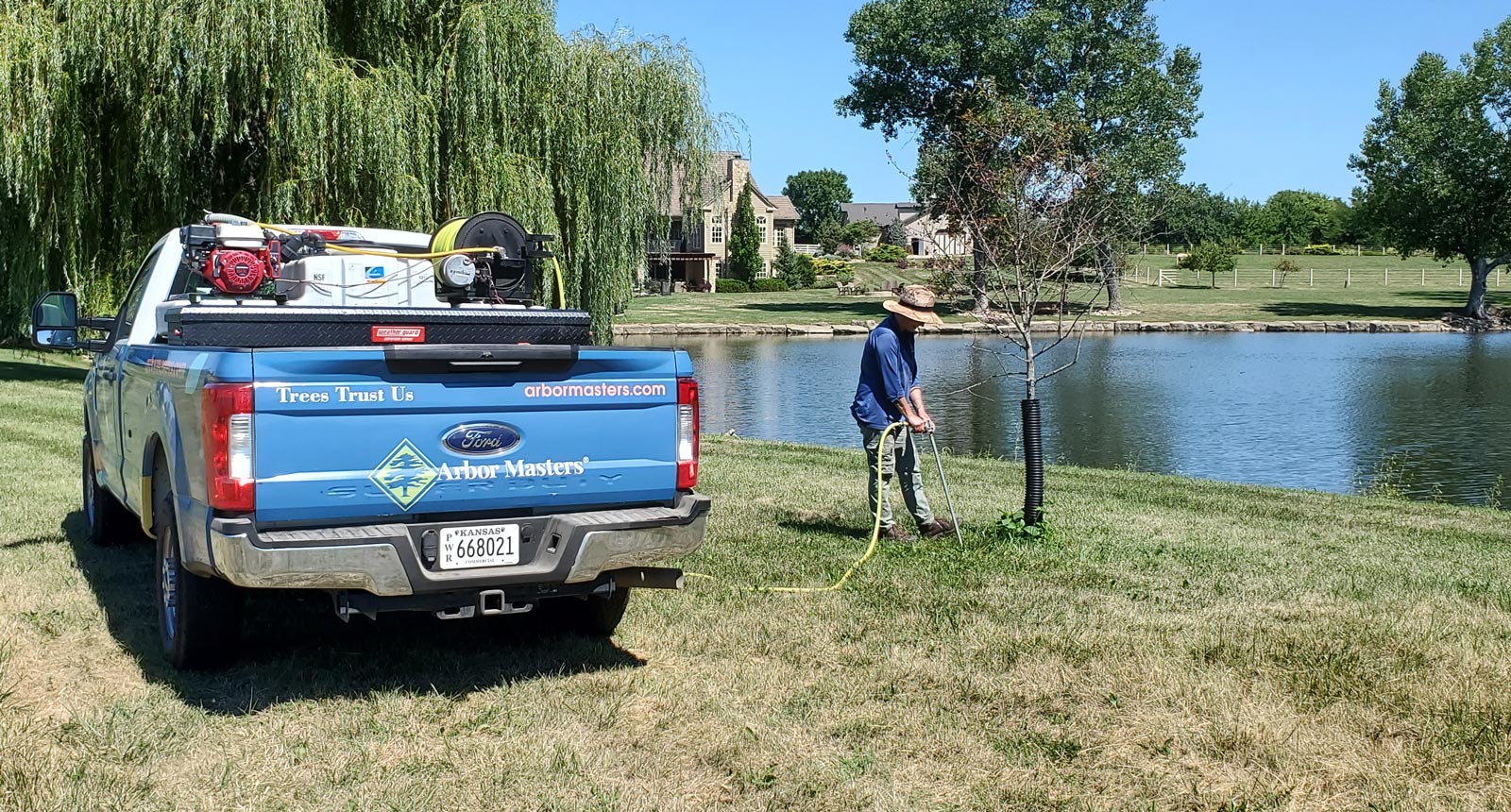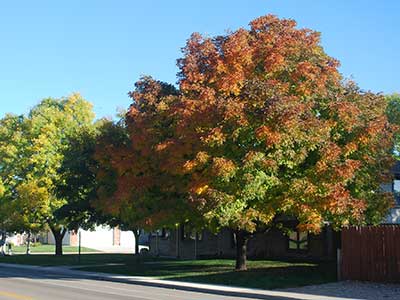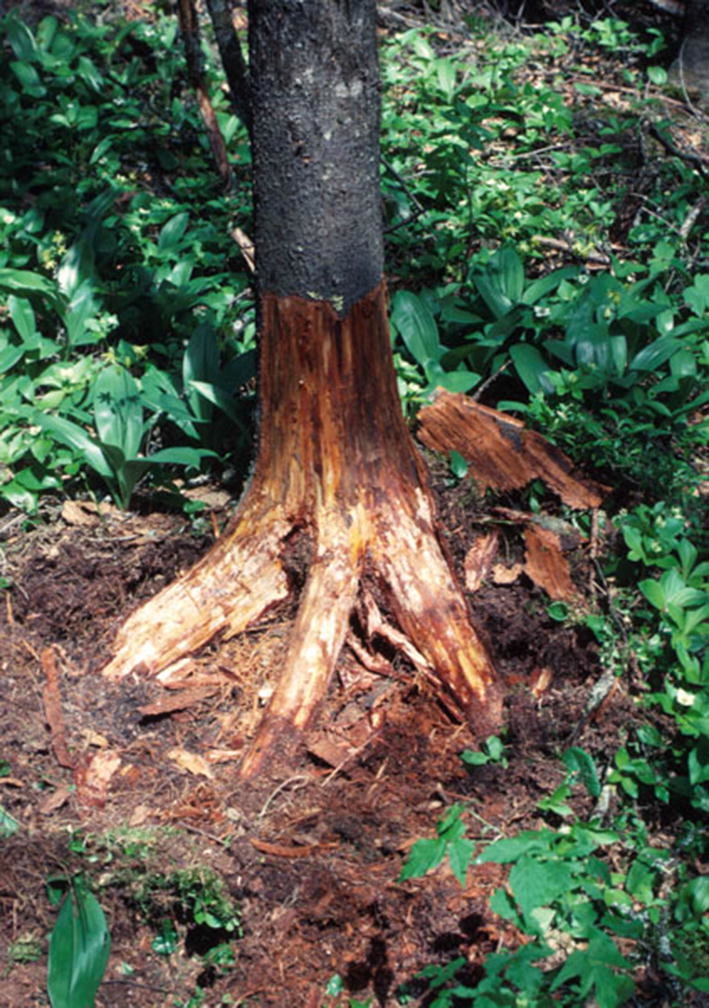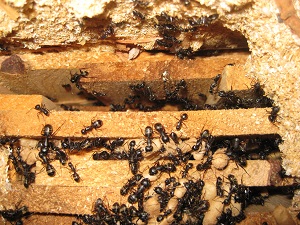Decades Old Pin Oak Gets a Second Chance
Routine Tree Examination and Servicing

What We Found
When Arbor Masters arborists arrived on site, they noted a large split down the center of the trunk where they could see through the entire structure of the tree, improperly placed cabling and evidence of years of improper pruning.
“The Pin Oak tree had practically split into two seperate trees. We knew that with practical pruning and proper structural support, our team was going to be able to save the client’s tree.” – Tyler Woodard, Certified Arborist at Arbor Masters
Arbor Masters Response and Services
- Pruning
- Wound Sanitation
- Structural Cabling
- Structural Bracing
- Root Flare Excavation
- Trunk Spray Treatment
The Arbor Masters team pruned the Pin Oak tree to reduce the load on the branch connection. The arborists reduced the overall canopy at the outer 1-foot to 3-foot branch connections. During pruning, the team sanitized their tools between each cut and sealed each cut with Cut Guard as a part of Arbor Masters’s Oak Wilt Prevention protocol. After pruning, the team installed two structural support cables in the canopy of the tree and three bracing rods in the trunk, measuring 42 inches in diameter at breast height. The team has a complimentary Root Flare Excavation to address the buried root flares and girdling roots found during inspection and a reliant trunk spray treatment to help suppress any potential fungal activity and increase the overall immune system of the tree. The Arbor Masters team will continue to monitor the tree during regularly scheduled annual checkups as part of our comprehensive plant health care plan watching for any changes or symptoms in the leaf tissue, upper canopy decline, growth, and any changes in the structural support cables and bracing rods.
Conclusion
If the homeowner had not consulted the expert arborists at Arbor Masters, another company would have removed the tree altogether. At Arbor Masters, trees trust us. Our tailored comprehensive plant health care plans allow your damaged trees to grow back strong and healthy.
Want to learn more about Arbor Masters’s plant health services?

